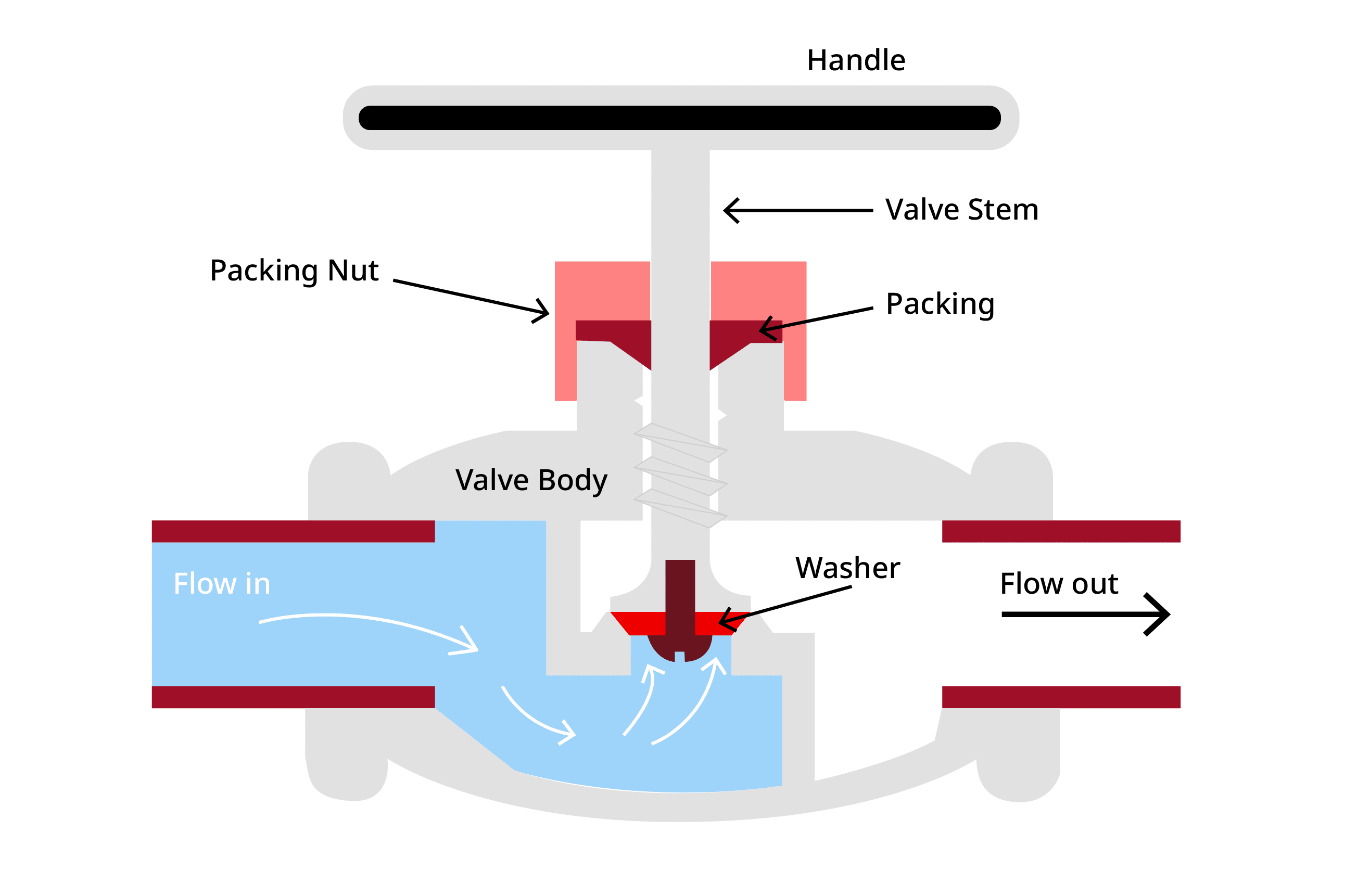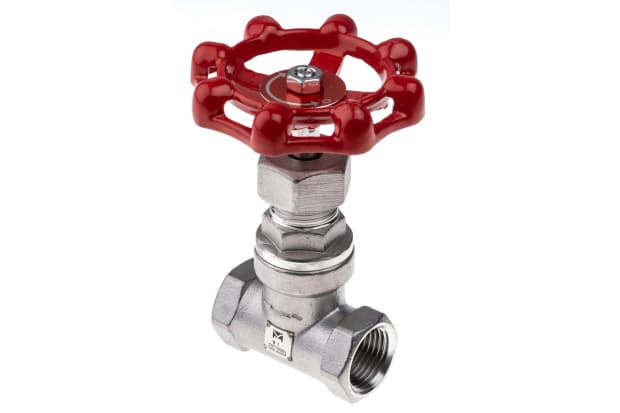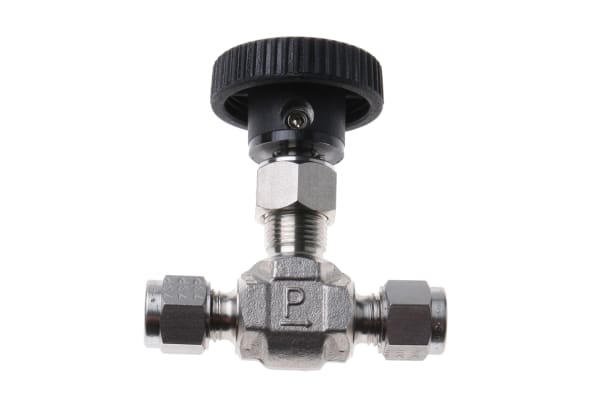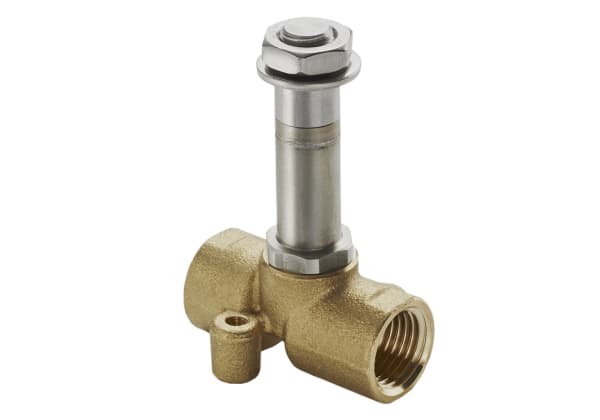- Published 16 Jun 2023
- Last Modified 29 Aug 2023
- 5 min
How Do Globe Valves Work?
Globe valves are ideal for controlling the flow of liquids through a piping system. Find out why in this article.

Reviewed by David Carmichael, Solution Engineer (April 2023)
Globe valves are plumbed into systems to help control the flow of liquids. Globe valves only work when the liquid is flowing in one direction, however, they are very effective at regulating the amount and pressure of fluids.
Defined by the rounded shape of the valve body, a circular plug attached to a stem and a handle can be twisted up or down to slot into or out of the seat in the valve. When the plug is in the seat, the flow is completely stopped. When it’s taken out, the flow is at its fullest. When the plug is placed anywhere in between, then the flow will be controlled.
So how exactly does the design of globe valves help to perform specific functions and meet the requirements of particular applications? This article will explain.
What are Globe Valves?
Globe valves are pipe fittings that can be fitted into plumbing systems to control the flow of fluid through them. One pipe is connected to direct the liquid into the valve and another to direct this out.
Otherwise known as globe control valves, they are defined by the following characteristics:
- A curved valve body
- A gap in the centre of the pipe with a seat that a circular plug can sit in firmly
- The circular plug is attached to a handle and stem that is twisted to raise or lower the plug
- A bonnet and packing keep the stem in place and prevent fluid from leaking from the system
- They can only be used for one-way fluid flow

Why Choose Globe Valves?
Globe valves have particular advantages over other types of flow control fittings, these include:
- Being available for manual or automatic operation, meaning they’re easy to use when controlling the flow of fluid through a system
- Easy to maintain, made with strong materials and able to withstand corrosion, high pressure or temperature. This means they have a high clog resistance and a low leakage rate
- A great throttling capability, unlike quarter turn or rotary valves like ball or butterfly valves
However, there are some reasons why you might want to choose other types of valves over globe valves. This includes the fact that the design of globe valves causes significant loss in fluid pressure or kinetic energy as the liquid moves through the fitting. In contrast, gate valves provide less resistance to the fluid.
Similarly, the globe valves’ design makes them difficult to shut off quickly and easily, with a twisting motion and greater force required. This might make them unsuitable for emergency or safety applications.
What are Globe Valves Used for?
Globe valves for flow control can help start, stop or restrict the movement of fluid through a one-way plumbed system. The fact that they’re easy to install and adjust, with an ability to tightly regulate the flow of liquids, means they’re suitable for a range of systems where strong safety protocols need to be in place. This is especially true in the case of dangerous or corrosive liquids such as oil or chemicals.
Specifically, globe valves can be used for:
- Shutoff, throttling or stop valves that help to regulate flow and pressure
- Extraction, drainage or sealing systems in turbines or boilers
- Feed systems for water or oil that need to be tightly controlled or shut off for periods of time
- Flow capacity measurement testing in new systems
- High-temperature or potentially dangerous industrial applications
Types of Globe Valves
Globe valves’ dimensions, sizes and designs vary considerably. The different sizes of valves are suitable for fitting different pipes and meeting various pressure and flow requirements. For example, the larger the valves are, the greater the pressures or amount of force they can withstand. Therefore, the specific application of the valve will determine its exact dimensions and design.
Steam Globe Valves
Steam globe valves are almost identical to fluid globe valves in their design. However, they have an actuator valve and a pressure-balancing chamber above the plug. This enables the plug to perform effectively and means the pressure in the valve doesn’t get too high.

Stainless Globe Valves
Stainless globe valves are fittings made of stainless steel. As such, they’re highly stable and sturdy and have good sealability and corrosion resistance. Therefore, they’re an excellent choice for use in systems where oil, gas or chemicals are being used as stainless globe valves will continue to perform well with these substances.
Flanged Globe Valves
Flanged globe valves have overlapping connections where extra bolts can be used to fix the valve into the main pipes. This makes the link between them even tighter and means they can withstand greater flow and higher pressures. This makes them suitable for gases, chemicals and oil or fuel.
Y-Type Globe Valves
Y-type globe valves have a stem that’s shaped at a 45-degree angle to the main fitting. This design means the high-pressure drop that’s typically caused by standard globe valves is avoided. The flow is straighter through this valve design, meaning the flow resistance of fluids is low. This means they’re most commonly used for throttling applications.
Further Reading
Related links
- A Complete Guide to Check Valves
- A Comprehensive Guide to Solenoid Valves
- RS PRO Stainless Steel Globe Valve, 1-1/2 in BSP 32 bar
- Schneider Electric Cast Iron Globe Valve 7311733000, 1 in Rp Female 399.9 kPa
- Schneider Electric Bronze Globe Valve VG310R-15B08, 1/2 in Rp Female 399.9 kPa
- A Complete Guide to Gate Valves
- Guide to Air Conditioning Units
- Globe Valves


